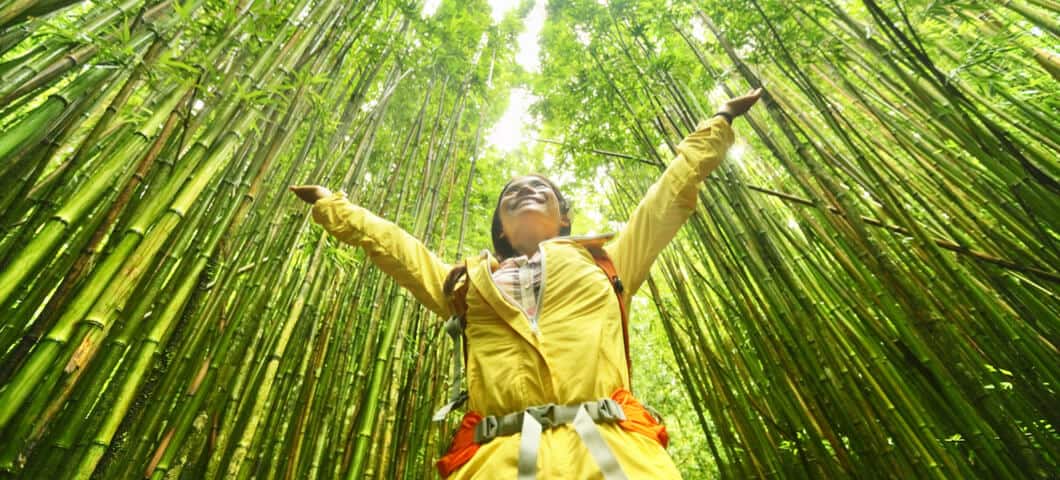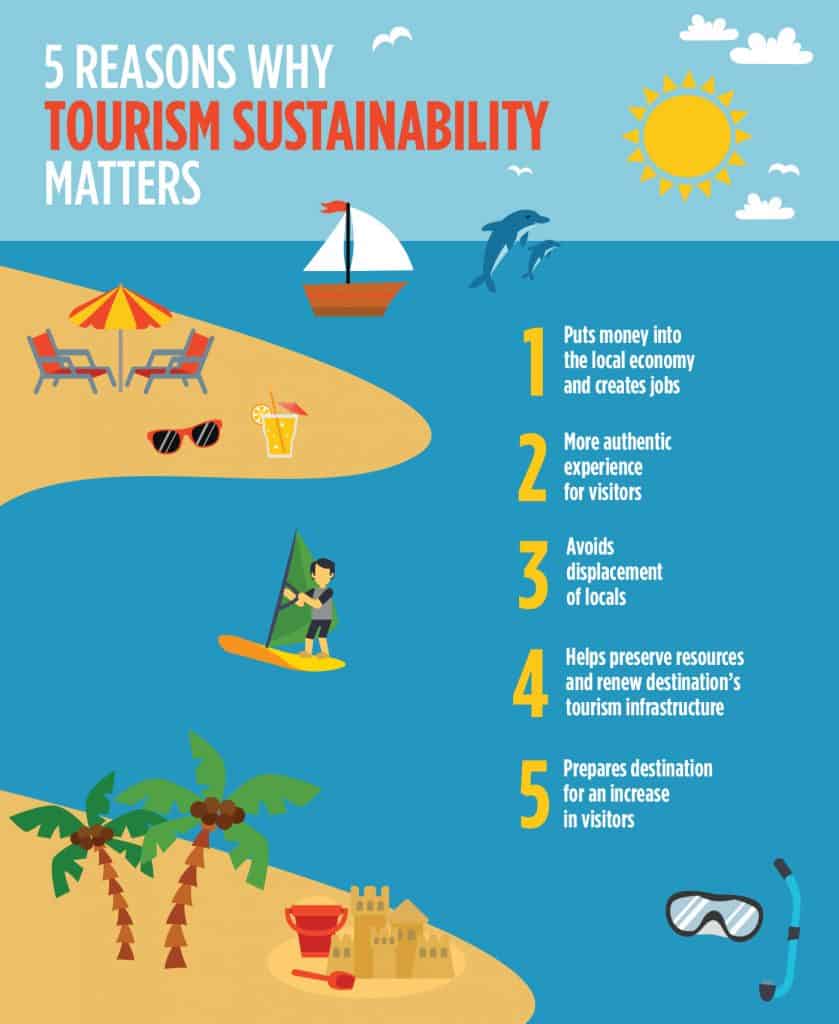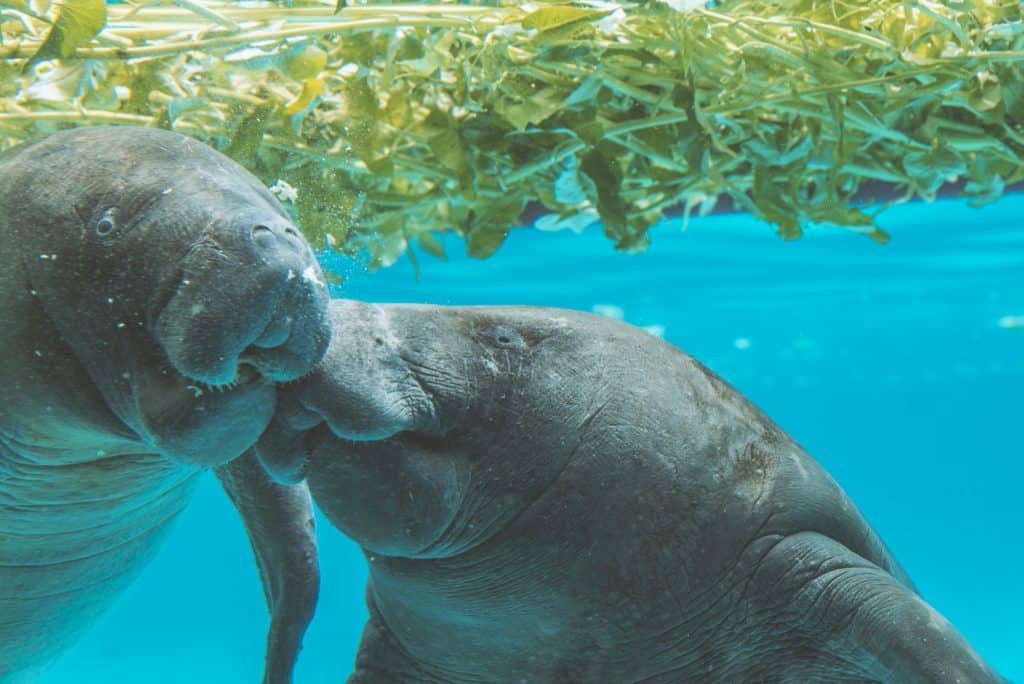
Sustainability: Building a Positive Impact into Your Destination

What Goes into Creating Sustainable Destinations
White sandy beaches, crystal clear waters, fresh air and tidy lands. These are a few natural elements that lead to a memorable experience for many travelers. It’s no surprise that scenic hot spots like Iceland have attracted six times its total population in 2017 for its awe-inspiring, panoramic views of green lands and hot springs. On our home turf, America’s most famous geologic marvel, The Grand Canyon, attracts 6.2 million visitors annually.
But while the amount of travelers eager to experience the beauty of these pristine destinations is overflowing, the purity of these destinations is drastically diminishing. Take the stretch of Mexico’s Caribbean coastline, for example; they invite 10,000 visitors daily and still haven’t implemented a recycling system. An environmentally similar situation appears in a famed hotel in Las Vegas that uses 12 trillion liters of water per year in a water scarce region.
Hotels and destinations alike are taking small steps to integrate sustainability marketing without transforming their whole USP to an eco-friendly standpoint—but they’re quickly learning that a simple message to “help us save the environment” isn’t enough to move the needle. This raises the question; how should your destination manage the rapid travel and tourism industry expansion while still preserving the environment for those that reside there?
Data vs storytelling
Your sustainability program will stand stagnant if your staff and visitors aren’t actively taking part to support your system. Providing data will give them a factual perspective by backing up claims that your vision for a healthier environment has, and will, prove change.
The Hyatt, for example, may not immediately reflect conservation efforts at first glance but dive a little deeper into their website and you’ll find that their sustainability program, Hyatt 2020 Vision, has earned them an overall CSR rating of 57%. With goals to achieve a 30% water reduction and 20% decrease in carbon by the year 2020, The Hyatt provides transparent data for their hotel staff to monitor day-to-day progress through the Hyatt EcoTrack tracking system.
On the other hand, storytelling engages travelers emotionally by illustrating your destination’s efforts in a tangible way. Capture the purity of your destination and pair it with a caption or creative to bring sustainability awareness to your audience.
Government control
The fast-paced tourism industry has mounted evidence that unwanted environmental impacts are increasing, and in turn, is challenging companies and regulators to devise new and creative ways to prevent these effects. The government is there to offer a helping hand among many topics, from safety and health to goods and services. Fortunately, fostering sustainable development is under their radar, too. Government enforcements can’t aid all challenges natural destinations face, but it allows managers to build upon them to benefit both the environment and the locals.
Our very own destination client, Citrus County, works hard to preserve the health of their Three Sisters springs year-round, as it’s home to more than 150 endangered manatees during the winter months. With the help of the National Wildlife Refuge system, the county was able to implement the Three Sisters Project to help strike a balance between manatee protection and the tourism these gentle giants bring. With this government assistance, they’re able to guide the public to appropriate, low-impact manatee viewing stations while preserving the property from development and managing it as a wildlife refuge.
Targeting the right audience
While sustainable tourism is a growing niche, the target audience can still be unclear. Different segments will respond to different messages and it’ll take some trial and error before you hit the right audience for your destination. By identifying travelers that are most likely to engage in your sustainability messages, you can recruit early adopters—those that will respond to your messages and have a higher propensity to share the word or even become an ambassador.
By monitoring visitor behavior, spending patterns and environmental actions, you can identify which segments of your overall audience could potentially fall under the market of early adopters.
How can your destination jump in on the movement?
“Creating a sustainable destination is more than just expressing your concerns for the environment, it’s driving action from your staff and visitors,” adds Lisa Mohle, travel and tourism category captain of evok. “It can be tricky to find a happy medium in being a voice for the health of your destination while staying true to your brand.”
Don’t overclaim your sustainability efforts when communicating them to your visitors. Stay consistent with what your destination stands for but lace sustainable tourism into places that are applicable, including social media and website.
Your visitors are going to be more responsive to measurable impacts opposed to outputs. Simply saying “we support local conservation programs” doesn’t reflect a bottom-line impact to your destination. Instead, share what efforts have changed the community with numbers—whether it’s statistics on wildlife rescues or the resulting impact of actively conserving water. With data, you’re avoiding any skepticism from your target audience when it comes to your responsibility and sustainability by providing evidence.
2019 has become a year of eco-tourism. Restaurants are discontinuing plastic straws, hotels are finding alternatives to complimentary plastic shampoo bottles and opportunities to join in a cleanup is becoming a part of the tourism experience.

